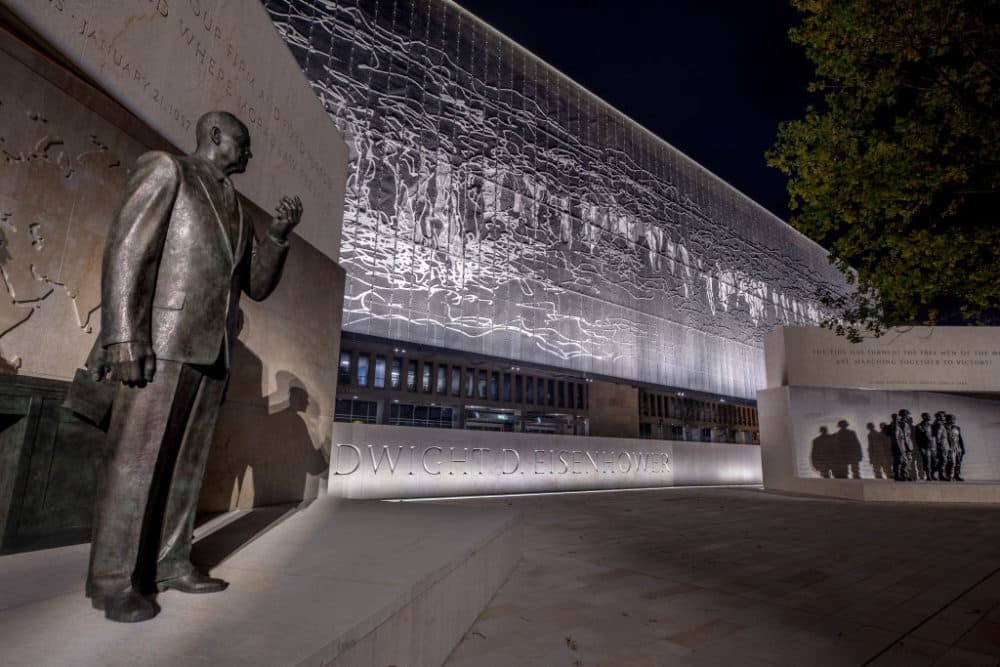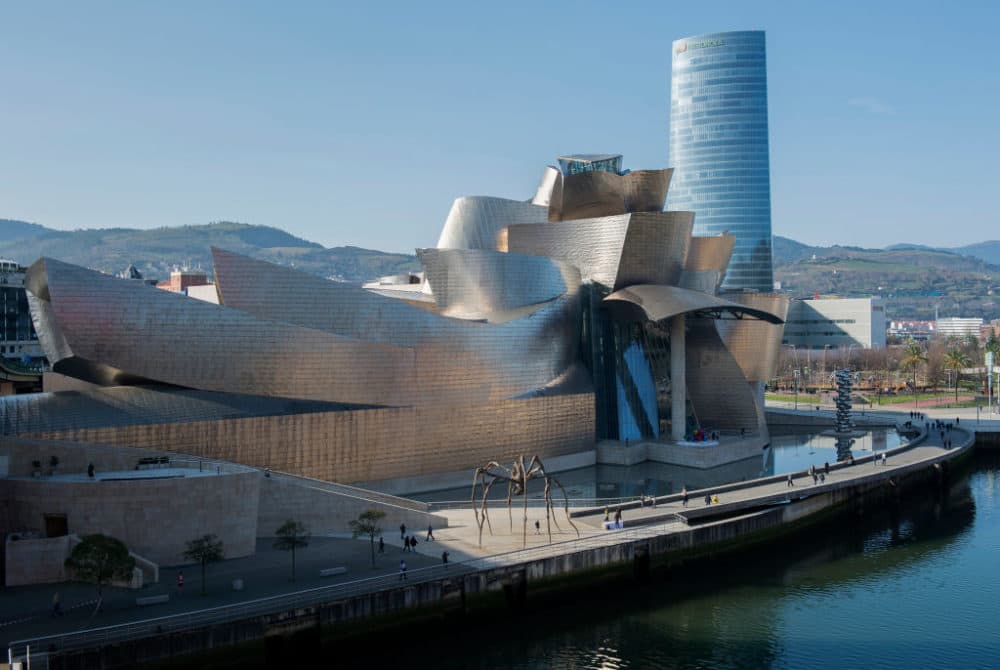The new Dwight D. Eisenhower Memorial, designed by architect Frank Gehry, is being dedicated Thursday in Washington, D.C.
The memorial’s centerpiece includes a woven steel tapestry depicting Pointe du Hoc on the Normandy coast. Eisenhower, known by his nickname “Ike,” was the Supreme Allied Commander during World War II and led the D-Day invasion of Normandy — a turning point in the deadliest war in history.
The 91-year-old world-renowned architect, who is best known for his sculptural, undulating buildings, says he was captivated by Eisenhower's tenacity and grit during World World II. Eisenhower was able to take on the “formidable” task of working with Europe’s most powerful generals — who “all kind of had their own egos and complications and accomplishments” — to successfully take back the continent during wartime, he says.
Gehry, who was in the Army at Fort Benning during Eisenhower’s presidency, says once he dived into Ike’s history, he knew he had to conceive a memorial in his honor.

When he first laid eyes on the planned site for the memorial, challenges arose immediately, he says. The site sat in the middle of a parking lot surrounded by government buildings that were utilized daily — the Department of Education, Department of Health & Human Services and the Federal Aviation Administration.
“So it wasn't enticing from that standpoint,” he says.
He brainstormed ways to avoid blocking out these buildings. Then-Secretary of Education Arne Duncan, who met with Gehry during the design process, had a request: “Please don’t block the windows,” Gehry recalls Duncan saying.
Gehry was up for the challenge. Because these important buildings couldn’t become a background to the memorial, he decided to use tapestries to “modify the site without hurting the other buildings” yet still configure a site filled with “gravitas and importance,” he says.
“Most tapestries are ... woven with materials and they're solid. You can't see through them,” he says. “Here we needed to devise a way to make a tapestry that was semi-transparent, that did not block the light, that was like a veil. And I had no clue how to do it.”
To accomplish this, he collaborated with Tomas Osinski, an architect who created a machine to weld steel wires that passed General Services Administration longevity requirements.
The final creation — Eisenhower at Pointe du Hoc — wasn’t always the project’s vision. The first plan was to honor Eisenhower’s hometown of Abilene, Kansas, but he says that didn’t hit on all of the 34th president’s accomplishments.
“Pointe du Hoc is a solid piece of ground, solid Earth. And how do you make it into a transparent tapestry?” he says. “We tried everything.”
Through “trial and error and just dogged determination,” Pointe du Hoc came to life on Independence Ave, he says.
Gehry, who says he grew up poor, started his career using cost-effective materials such as corrugated metal and galvanized wood framing — and still does so to this day. He says he gets a bad rap because people assume the curvature of his buildings are expensive.


But one of his most famous works, the Guggenheim Museum Bilbao in Spain, was inexpensive, he says, totaling about $300 a square foot in 1997.
By using a specific architectural software system, his team can “demystify the building of those shapes and can do them very inexpensively,” he says. “So I guarantee, I'd say 90% of my buildings are on budget.”
He “absolutely” thinks the kind of technology he was able to use to bring the most complex imagined forms into built reality could, and should, be utilized to make architecture more responsive to present-day challenges such as climate change and inequality.
While he says he can’t change every aspect of the industry, Gehry says “the computer systems — and they're getting better and better — allow you to do things that are much easier to do now that you couldn't do in the past.”
Part II of host Jeremy Hobson’s conversation with Frank Gehry will be available on Friday, Sept. 18.
Julia Corcoran produced and edited this interview for broadcast with Peter O'Dowd. Serena McMahon adapted it for the web.
"had" - Google News
September 17, 2020 at 11:36PM
https://ift.tt/3hG3Jif
'I Had To Do It': Architect Frank Gehry On Designing The 'Complicated' Dwight D. Eisenhower Memorial - Here And Now
"had" - Google News
https://ift.tt/2KUBsq7
https://ift.tt/3c5pd6c
Bagikan Berita Ini














0 Response to "'I Had To Do It': Architect Frank Gehry On Designing The 'Complicated' Dwight D. Eisenhower Memorial - Here And Now"
Post a Comment